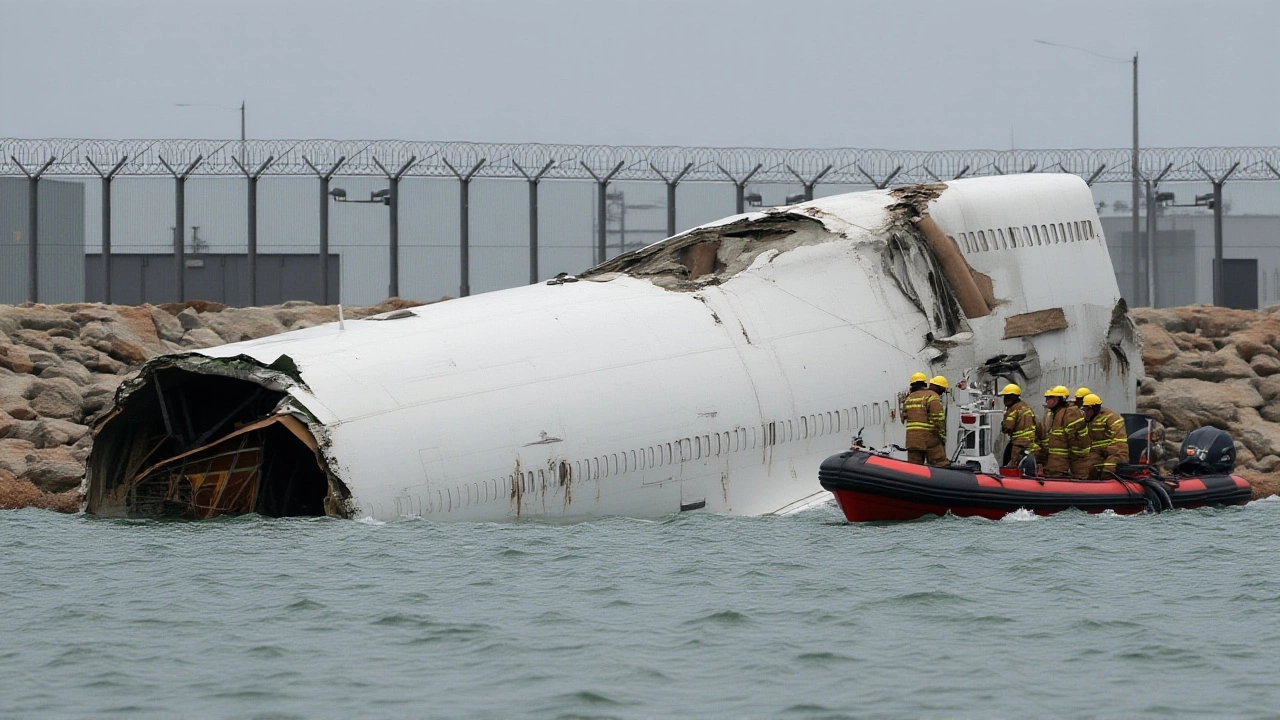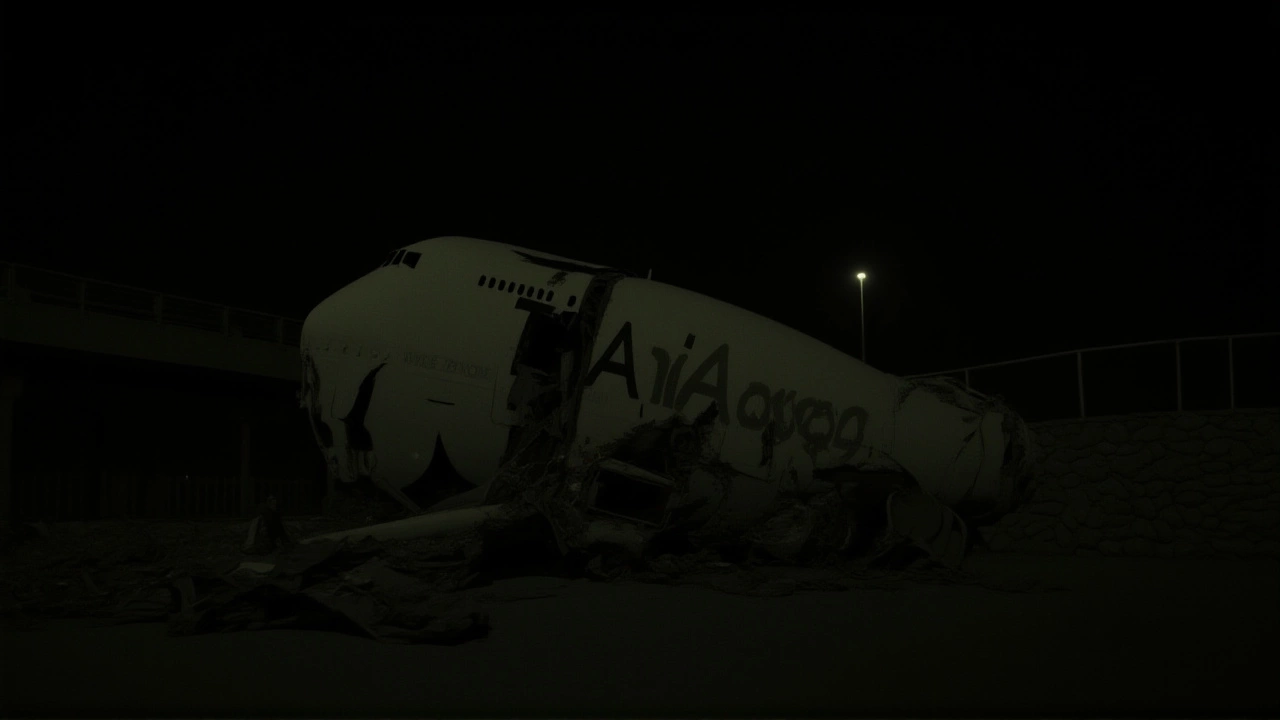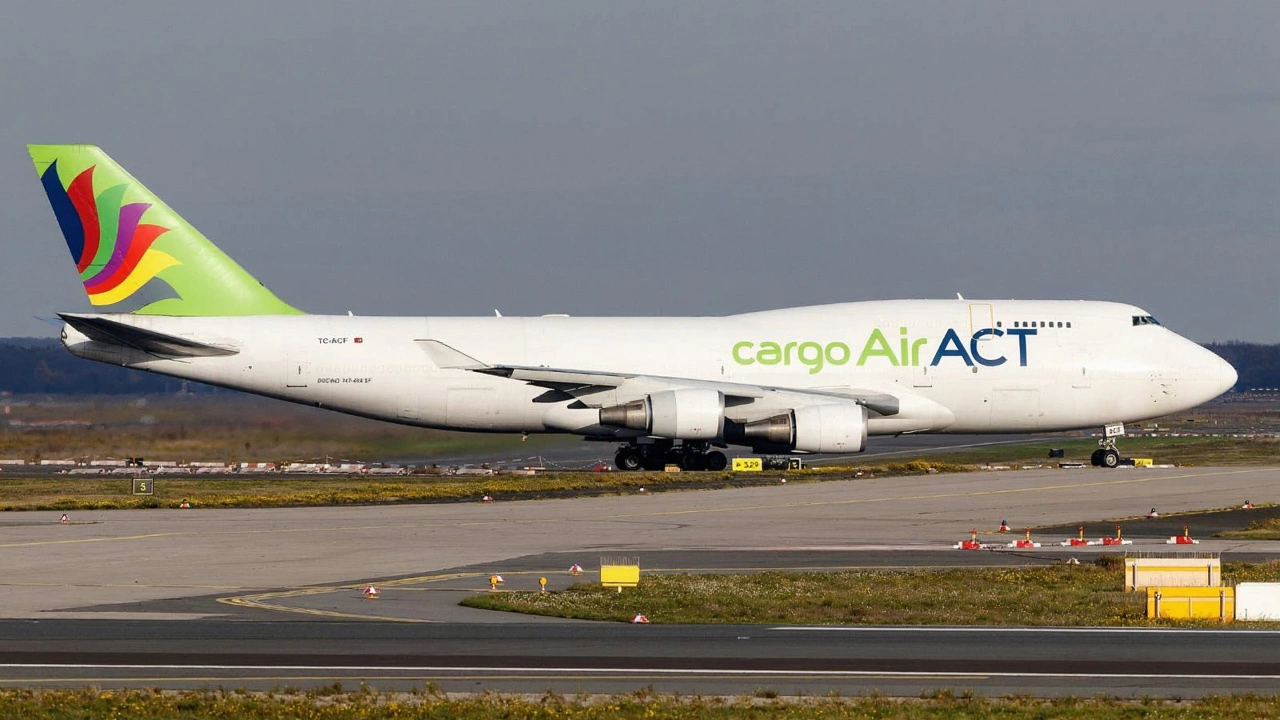When Emirates SkyCargo’s Boeing 777F (registration A6‑EMB) left the runway at Hong Kong International Airport on June 12, 2024, the aircraft slid into the adjacent waters, prompting an emergency response that rescued the two crew members on board.
What Happened on the Tarmac?
The incident unfolded just after 03:45 local time, when Flight EK‑3659 was completing a night‑time cargo run from Dubai to Hong Kong. According to the Hong Kong Civil Aviation Department (HKCAD), the plane touched down on runway 07L, but a sudden burst of cross‑wind combined with a brief rain shower caused the aircraft to hydroplane.
“The aircraft was travelling at the normal landing speed when the runway became unexpectedly slick,” said Chief Inspector Leung Chi‑ming of HKCAD in a briefing. “The pilots applied maximum braking, but the aircraft continued forward and eventually departed the paved surface, rolling into the sea beyond the drainage ditch.”
Two crew members – Captain Mohammed Al‑Farsi and First Officer Liang Wei – were able to evacuate via the cargo door, which was equipped with an emergency slide. Both were taken to the on‑site medical centre, where they were listed as “stable with minor injuries.”
Background on Emirates’ Freight Operations
Emirates SkyCargo operates a fleet of 28 Boeing 777F freighters, making it one of the world’s largest pure‑cargo airlines. The Dubai‑based carrier moved roughly 650,000 tonnes of freight in 2023, a 12% increase from the previous year, according to its annual report.
“Our fleet is routinely maintained to the highest standards,” said Tim Clark, President of Emirates Group, in a statement released before the accident. “We are fully cooperating with Hong Kong authorities and will conduct a thorough internal review.”
While runway excursions are rare for modern jet freighters, the incident echoes a 2018 event at Hong Kong where an Airbus A330‑300 overran runway 24R due to a similar weather dip. That episode led to the airport’s installation of additional grooving on critical runway lengths.

Official Responses and Immediate Actions
- HKCAD opened a formal investigation under ICAO Annex 14, with a preliminary report due within 30 days.
- Air Traffic Control temporarily halted all take‑offs on runway 07L while the runway surface was inspected.
- Emirates SkyCargo grounded its other 777F aircraft pending a fleet‑wide brake system audit.
- The Airport Authority announced that temporary ferry services would operate for passengers and staff until runway 07L is cleared.
“Safety is our top priority,” said Ms. Anita Ho, spokesperson for the Airport Authority, during a press conference. “We have deployed fire‑rescue units, amphibious vehicles, and medical teams to ensure the situation is fully contained.”
Why It Matters: Safety Implications
Runway excursions account for roughly 20% of all serious aviation incidents worldwide, according to the International Air Transport Association (IATA). The root causes often involve wet runway conditions, inadequate braking performance, or pilot decision‑making under pressure.
In this case, investigators will likely examine three key factors:
- The condition of the runway’s surface friction at the time of landing.
- The performance of the 777F’s anti‑skid braking system during the emergency.
- The crew’s adherence to Emirates’ standard operating procedures for wet‑runway landings.
Industry experts, such as Dr. Alan Cheng, a senior analyst at Aviation Safety Consulting, note that “advances in runway grooving and real‑time friction measurement have reduced the likelihood of hydroplaning, but human factors remain a wild card.”

What Comes Next?
The HKCAD’s final report will determine whether any regulatory changes are needed, such as stricter runway friction testing protocols during monsoon months. Emirates has pledged to share its own findings with the aviation community, emphasizing a collaborative approach to preventing future excursions.
Meanwhile, the cargo that was aboard – consisting of pharmaceuticals, automotive parts, and high‑value electronics – has been off‑loaded onto temporary barges. Shipping agents estimate that full restoration of normal cargo operations will take about 48 hours, assuming no further damage is uncovered.
Frequently Asked Questions
How many people were injured in the incident?
Both crew members – Captain Mohammed Al‑Farsi and First Officer Liang Wei – were rescued with minor injuries and are listed as stable by on‑site medical personnel.
What caused the aircraft to leave the runway?
Preliminary findings point to a sudden wet runway combined with a cross‑wind gust, which reduced friction and led to hydroplaning despite the pilots’ maximum braking effort.
Will Emirates continue its flights to Hong Kong?
Emirates has suspended its 777F cargo services to Hong Kong temporarily while a fleet‑wide brake audit is completed, but passenger services remain unaffected.
What impact does this have on global cargo logistics?
The short‑term disruption adds pressure to already tight supply‑chain routes in the Asia‑Pacific region, prompting shippers to seek alternative carriers for high‑value goods.
What safety measures are being considered to prevent future runway excursions?
Authorities are reviewing runway friction‑testing frequency, exploring the use of advanced runway surface sensors, and urging airlines to reinforce wet‑runway landing protocols across crews.

